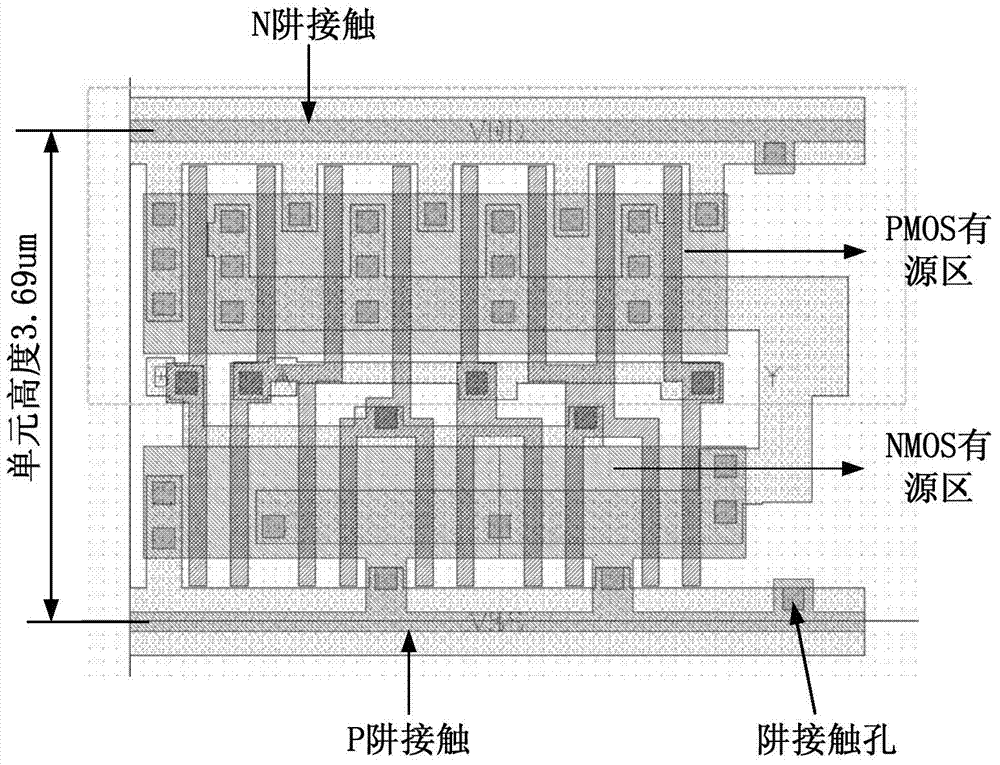Standard cell design method resistant to single-particle latch-up effect
A standard cell and latch-up effect technology, applied in computing, special data processing applications, instruments, etc., can solve problems such as limiting the working speed and scale of radiation-resistant devices, increasing cell area, parasitic capacitance, and reducing circuit speed, etc., to achieve small Effects of layout design modification, increased flexibility, and mitigation effects
- Summary
- Abstract
- Description
- Claims
- Application Information
AI Technical Summary
Problems solved by technology
Method used
Image
Examples
Embodiment Construction
[0025] Combined with the mechanism analysis of single event latch-up effect, the basic principle to avoid latch-up effect is:
[0026] (1) Reduce well / substrate parasitic resistance. When a single event current (IWELL) occurs in the well / substrate p-n junction, reducing the well resistance (RWELL) is equivalent to reducing the voltage drop between the emitter and base of the vertical parasitic PNP transistor in the well, thereby reducing the trigger Risk of parasitic PNP transistor turning on;
[0027] (2) Destroy the characteristics of the parasitic bipolar transistor and reduce the current gain of the transistor. Reducing the gain of the parasitic transistor in the latch structure is equivalent to reducing the feedback loop current gain of the two parasitic transistors, so as to avoid continuous increase of the positive feedback loop current in the latch structure.
[0028] Aiming at the damage mechanism of spatial single event latch-up effect to CMOS integrated circuits, ...
PUM
 Login to View More
Login to View More Abstract
Description
Claims
Application Information
 Login to View More
Login to View More - R&D
- Intellectual Property
- Life Sciences
- Materials
- Tech Scout
- Unparalleled Data Quality
- Higher Quality Content
- 60% Fewer Hallucinations
Browse by: Latest US Patents, China's latest patents, Technical Efficacy Thesaurus, Application Domain, Technology Topic, Popular Technical Reports.
© 2025 PatSnap. All rights reserved.Legal|Privacy policy|Modern Slavery Act Transparency Statement|Sitemap|About US| Contact US: help@patsnap.com



